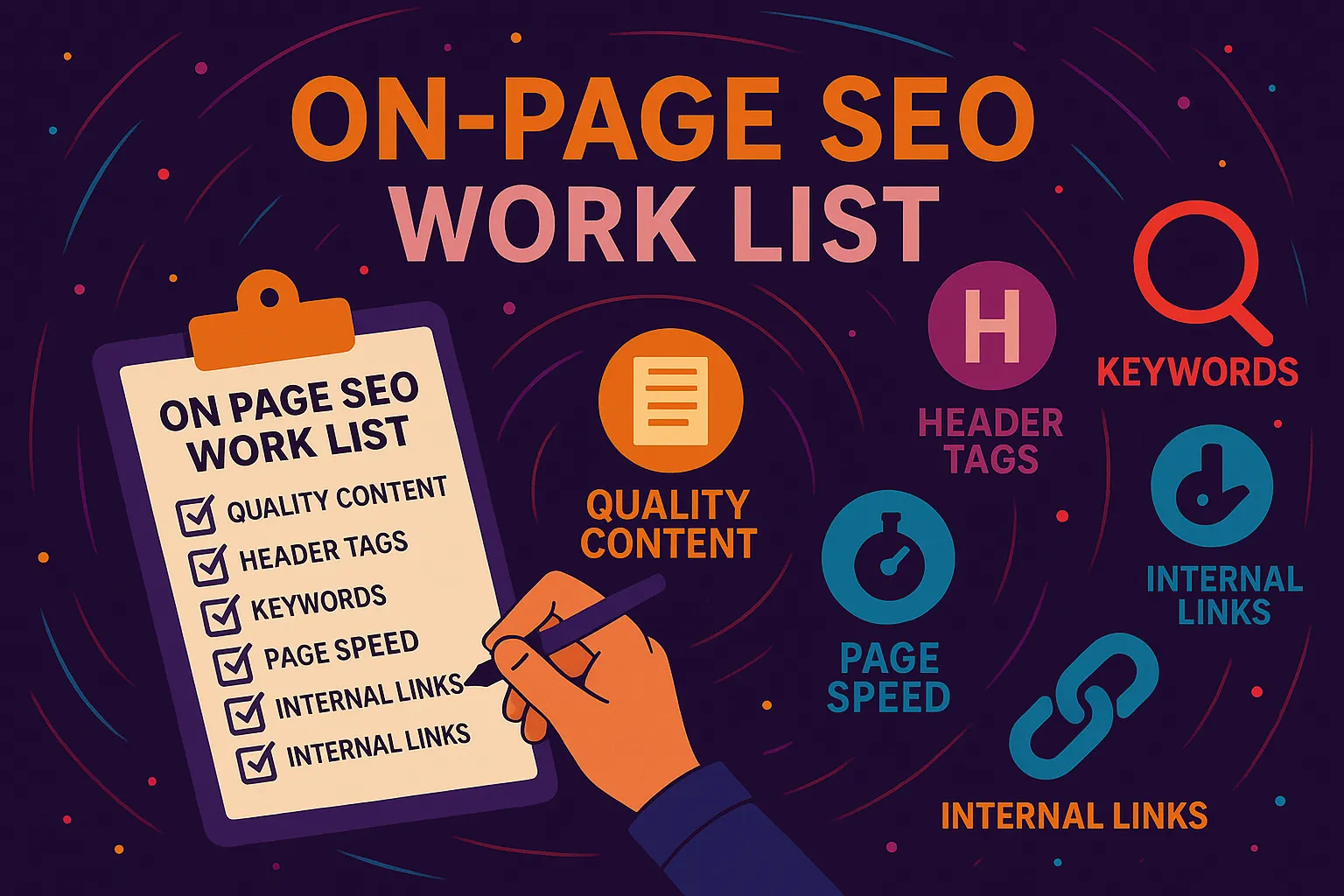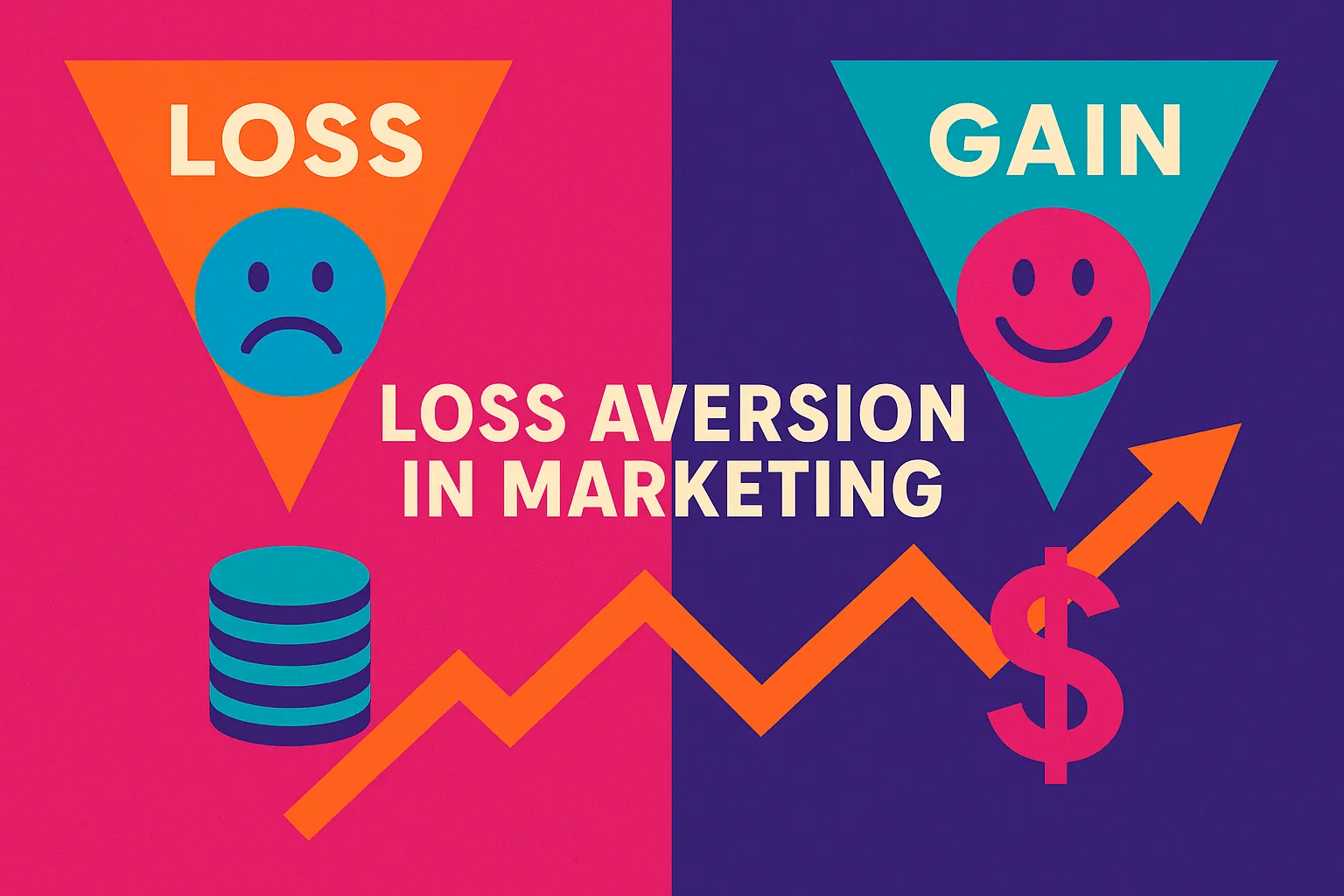What Is Technical SEO?
Let me break it down in simple terms. Technical SEO is everything you do behind the scenes to make sure your website can be found, understood, and indexed by search engines like Google. It’s not about the blog post you write or the catchy social caption—it’s about the engine under the hood.
This includes things like your website speed, whether Google can crawl your pages, your mobile-friendliness, how your links are structured, and whether your site’s code tells Google what each page is about. At Vibe Branding, we’ve found that mastering this part of SEO is often what separates websites that quietly fail from ones that dominate their space.
When I first started working on technical SEO projects years ago, I remember feeling overwhelmed. It was all robots.txt files, sitemap.xml talk, crawl budgets, and canonical tags.
But the deeper I dove, the more I realized this is where a website’s true power lives. You could have the best content in the world, but if Google can’t read your site properly, you’re invisible.
That’s why we’ve built technical SEO into every project we deliver at Vibe Branding. Whether it’s a new eCommerce build or refreshing a corporate website, it always starts with the technical foundation.
Let’s talk about why this matters so much in 2025. Search engines have come a long way, and so have users.
Google’s algorithms now look at hundreds of factors when deciding which pages should rank at the top. Many of those factors are technical.
Site speed? That’s a ranking factor.
Mobile usability? That’s another. Clean URLs, HTTPS encryption, no duplicate content—these are all technical pieces of the puzzle.
The point is, if you skip this part, your beautifully designed site might not ever get the traffic it deserves. We recently worked with a mid-sized service business that came to us after investing heavily in content marketing for six months. Great articles, helpful guides—everything you’d want.
But traffic was flatlining. When we ran a technical SEO audit, we found their sitemap wasn’t even submitted to Google.
Worse, half their pages had been blocked by the robots.txt file. Once we fixed these issues, optimized page speed, and cleaned up their internal linking, traffic started picking up within weeks.
That’s the magic of a solid technical base. So how can you tell if your site has technical SEO issues?
A few warning signs usually stand out: slow load times, pages that don’t show up in Google, broken internal links, or mobile experiences that feel off. You can use tools like Google Search Console or Semrush to get a detailed look.
But even without those, just trying to browse your site like a customer can reveal a lot. Does it load fast on mobile?
Are there weird redirects or dead ends? If you see these things, chances are, search engines see them too.
TL;DR – What You’ll Learn in This Guide on Technical SEO
- What technical SEO really means (in plain English)
- Why technical SEO is the backbone of your website’s performance in search
- How to check your site for technical SEO issues and fix them
- Tools and tips from our 10+ years of digital marketing experience
- Step-by-step advice on making your site faster, more mobile-friendly, and structured for Google
Crawlability and Indexability: The Building Blocks of Visibility
Now let’s dive deeper into some of the core elements that make up technical SEO. The first thing we focus on with every client is crawlability and indexability.
In simple terms, that’s how Google discovers and stores your site pages. If your site can’t be crawled, it can’t be indexed—and if it’s not indexed, it won’t show up in search results.
We make sure all key pages are linked internally, that there’s a clean URL structure, and that pages aren’t being blocked or hidden accidentally. It’s surprising how many businesses have amazing content sitting behind technical walls without even knowing it.
I remember one project where the entire blog section of a client’s site was completely orphaned—no links pointing to it from the rest of the site. It existed in its own silo.
Google couldn’t find it, which meant no one else could either. All it took was a few strategic internal links and boom—those pages started ranking.
Small adjustments like this make a massive difference in how your site performs. We also monitor the indexing status of every page.
This includes checking if any important pages are marked as “noindex” by mistake or if duplicate content is confusing Google about which version to show. These are the kinds of invisible errors that quietly kill SEO performance over time.
Thankfully, most of these issues are easy to fix once you know where to look. At Vibe Branding, we walk through this process step-by-step with our clients, especially during full site audits.
One of the most empowering things we do is teach teams how to use tools like Google Search Console to spot these problems on their own. You don’t need to be a developer to understand this stuff—you just need a guide.
That’s where we come in.

Sitemaps and Robots.txt: Your Website’s Blueprint and Gatekeeper
Another big factor is your XML sitemap and robots.txt file. These might sound super technical, but they’re basically just files that guide search engine bots around your site.
The sitemap is like a treasure map telling Google where everything is. Robots.txt is more like the security gate—telling bots which areas to skip.
If either of these is misconfigured, your site can become a maze instead of a map. We’ve fixed countless robots.txt files that were accidentally blocking entire sections of valuable content.
In one case, a client’s top product pages were being excluded from crawling because someone had disallowed the entire “/shop/” directory. Their organic traffic was suffering as a result.
As soon as we cleaned up that file and resubmitted the sitemap, those pages started getting indexed and ranked again. It was a quick win with major ROI.
Your sitemap should be updated whenever new content is added to your site. At Vibe, we use automated systems to regenerate and resubmit sitemaps weekly for large sites, especially ecommerce stores with hundreds of SKUs.
That way, nothing falls through the cracks. We also monitor the number of discovered URLs vs. indexed URLs to catch any problems early.
The robots.txt file can also be used to block sections that you don’t want indexed—like staging environments, thank-you pages, or admin logins. But you need to be precise.
A single misplaced slash can tell Google to avoid your entire site. That’s why we recommend reviewing this file every time a site update goes live.
It’s your first line of communication with search engines—treat it with care.
Site Speed: Why Fast Sites Win (and Slow Sites Lose)
Let’s be real—nobody likes waiting for a slow website to load. You’ve done it.
I’ve done it. You land on a site and it’s taking forever, so you hit the back button and move on.
Google knows this, and it’s one of the reasons why site speed is a direct ranking factor. In our experience at Vibe Branding, technical SEO is often where we can unlock huge performance gains simply by making a site faster.
One of the most common issues we see is uncompressed images. We’ve had clients upload 4K photography straight from their camera, not realizing each image is 10MB.
Multiply that by ten and you’ve got a homepage heavier than a Netflix movie. So one of the first things we do is compress and resize assets, especially for mobile delivery.
We also reduce unnecessary scripts, defer loading JavaScript, and enable browser caching. These may sound like minor tweaks, but combined, they drastically improve load time.
To measure improvements, we rely on Google’s PageSpeed Insights and Lighthouse. These tools help us track metrics like Largest Contentful Paint (LCP) and Total Blocking Time (TBT), which are part of Google’s Core Web Vitals.
If a client’s site scores below a 70, we get to work. We’ve seen bounce rates cut in half just from getting those numbers up.
We also recommend using a CDN—Content Delivery Network—especially for businesses serving customers in different regions. A CDN caches your content across multiple servers around the world, so users get faster access no matter where they’re located.
The result is snappier performance, fewer delays, and a better user experience. So if you want a fast site, remember this: speed isn’t just for convenience.
It’s part of technical SEO, and it affects both your rankings and your revenue.

Structured Data: Speak Google’s Language
Here’s something I love about technical SEO—it’s where your website can start talking directly to search engines. Structured data, also known as schema markup, is a way to annotate your content with special tags that tell Google exactly what a page is about.
Whether it’s a recipe, a product, an event, or a review, there’s a schema type for that. When you use structured data correctly, your pages can appear in search results with enhanced features—star ratings, product pricing, event dates, and more.
These are called rich results, and they significantly increase your click-through rates. We’ve seen clients jump 20–30% in organic traffic just from gaining rich snippet visibility.
At Vibe, we use tools like Google’s Structured Data Markup Helper and Schema.org to create these tags. Then we validate them with Google’s Rich Results Test before deploying them site-wide.
If your site is on WordPress, plugins like Yoast SEO make this easier—but we often custom-code schema for clients with more complex setups. One thing to keep in mind is that adding schema won’t guarantee you a rich snippet.
Google decides whether to show it. But without it, you’re not even in the running.
And in 2025, where competition is steeper and attention spans are shorter, that extra visibility is everything.
Mobile Optimization and Core Web Vitals
Since Google moved to mobile-first indexing, the mobile version of your site is now the most important version. If your mobile experience is clunky, your rankings will reflect that.
I always tell clients, “You’re not optimizing for desktop anymore. You’re optimizing for a smartphone in someone’s hand, probably while they’re multitasking.” That changes everything.
We design mobile-first by default at Vibe Branding, but even with that foundation, we always run new builds through mobile usability tests. We look for problems like buttons that are too small to tap, text that’s hard to read, and layout issues that cause users to pinch and zoom.
Those friction points might seem small, but they tell Google your site isn’t user-friendly. Core Web Vitals play a key role here.
These are Google’s user experience metrics—specifically:
Largest Contentful Paint (LCP): How fast your main content loads
First Input Delay (FID): How fast your site responds to user input
Cumulative Layout Shift (CLS): How stable your site’s visual elements are
We once worked on a blog where the mobile version constantly shifted as ads loaded. That’s a bad CLS score.
We restructured the layout and gave image containers fixed sizes to prevent unexpected shifts. Instantly, rankings and time-on-site improved. You can check your own Core Web Vitals in Google Search Console under the Experience tab.
If any of them are failing, it’s time to roll up your sleeves and get under the hood. We help our clients fix these not just for rankings—but because user satisfaction drives conversions, too.
Running a Technical SEO Audit
Think of a technical SEO audit like a full-body checkup for your website. Even if things seem fine on the surface, there could be hidden issues hurting your search performance.
At Vibe Branding, we run audits every quarter for our clients—and always before launching any major content campaigns. We start by crawling the site using tools like Screaming Frog and Semrush.
These crawlers help us spot broken links, redirect chains, duplicate content, missing metadata, and more. We also compare the live site against its sitemap to make sure nothing is being left out or blocked unintentionally.
Once we have our findings, we organize them into priority levels—critical, moderate, and low. Critical issues might include URLs returning 5xx errors, noindexed product pages, or pages blocked from bots entirely.
Moderate issues could be things like duplicate title tags or pages missing structured data. Then we work through these fixes methodically, often in collaboration with a client’s development team.
In one case, a SaaS company we worked with had over 300 low-quality pages indexed—leftover from an old CMS migration. By cleaning up and consolidating those pages, we improved their crawl budget efficiency and saw their domain authority rise by four points over the next three months.
That’s the kind of hidden win that only a thorough audit can reveal.

Making Technical SEO Part of Your Website Maintenance
A big misconception is that technical SEO is something you “do once.” That couldn’t be further from the truth. Sites change, plugins break, platforms update, and teams grow.
What worked last year might not be working today. That’s why we treat technical SEO as a regular part of ongoing maintenance—not a one-and-done job.
We recommend scheduling a technical review at least every three months, and especially after major site changes like migrations, redesigns, or CMS updates. This includes checking your robots.txt and sitemap files, revalidating structured data, and testing site speed across devices.
For ecommerce brands, we also monitor for crawl budget waste—like faceted URLs or auto-generated tag pages that aren’t adding any value. These can quickly balloon into hundreds of unnecessary URLs, which slow down crawlers and dilute your site’s focus.
At Vibe Branding, we build maintenance workflows into every project we manage. We train client teams to use Google Search Console effectively, to watch for crawl errors or indexing anomalies.
We set up alerts so no critical issue goes unnoticed for long. This proactive mindset saves time, protects rankings, and keeps growth on track.
Best Practices for Technical SEO in 2025 and Beyond
Looking ahead, the standards for technical SEO are only getting higher. Google continues to evolve, and so do user expectations.
That’s why staying ahead of the curve isn’t just smart—it’s essential. Here’s what we recommend focusing on going forward. First, treat Core Web Vitals as a living, breathing metric.
Don’t just fix them once and move on. Monitor them monthly, especially when launching new content or features.
Next, embrace structured data. As AI and voice search become more prominent, search engines will rely on schema to interpret and rank information accurately.
Accessibility is another important frontier. Sites that are accessible to people with disabilities often perform better in search, not just because it’s the right thing to do—but because it improves user experience for everyone.
We’ve started implementing ARIA roles, better alt text, and cleaner navigation across all new builds. Finally, never underestimate the power of internal linking.
The web is made of links, and your site is no different. Strategic links help users find what they need and help Google understand your site’s hierarchy.
Every month, revisit your top-performing pages and add relevant internal links to newer or deeper pages. It’s free SEO fuel.
The Vibe Branding Approach to Technical SEO
At Vibe Branding, Technical SEO isn’t just another box we check off during a web build—it’s baked into everything we do. With over a decade of experience helping businesses scale through smart digital marketing, we’ve seen how technical SEO can be a game changer.
I remember when we worked with a regional healthcare provider that had beautiful branding and great content, but their online presence was almost invisible. Why? Poor indexing, broken internal links, and painfully slow mobile load times.
Our first step was a deep technical audit, and from there, we rebuilt their foundation. Within four months, their organic traffic doubled, and their contact form submissions jumped 87%.
We’ve learned that most business owners don’t realize how many hidden technical issues are dragging down their SEO potential. They’ll spend thousands on paid ads or social campaigns without realizing that their own website is leaking opportunity.
That’s where we step in. We start every SEO strategy with a complete diagnostic of their site’s technical health. Because without that, even the best content strategy is like putting lipstick on a ghost.
Our team works closely with developers and designers, bridging the gap between visual creativity and code-level efficiency. We speak both languages.
That means we don’t just hand over a checklist—we implement the fixes, monitor results, and keep testing. We use real-time data and industry-standard tools to prioritize what really matters.
Every site we touch is treated like an evolving ecosystem, not a static brochure. What makes our technical SEO process unique is how hands-on we are.
We don’t outsource the grunt work. We get into the weeds of your site structure, manually review your sitemap, comb through 404s and 301s, and hunt down duplicate content ourselves.
We test across devices. We validate schema line by line.
Because we know from experience: this level of detail leads to results.

Why This Isn’t Just for SEO Pros
One of the biggest myths out there is that technical SEO is only for developers or agencies. Not true.
I’ve walked dozens of clients—non-tech-savvy ones—through their own technical issues in plain language. And something incredible happens when business owners understand what’s going on under the hood.
They stop guessing. They start focusing. They make smarter decisions.
If you’re a business owner, marketing director, or even just someone trying to grow a blog—this is your reminder that you don’t need to know how to code to benefit from technical SEO. You just need a trusted partner who does.
Someone who can audit your site with precision, explain the issues clearly, and help implement solutions that move the needle. Our clients often tell us the same thing: “We didn’t know how bad it was until you showed us.”
And that’s okay. That’s what we’re here for.
We exist to make SEO accessible, understandable, and most importantly—profitable. That’s the heart of everything we do at Vibe Branding.
What You Can Do Right Now
So what should you do if you’re reading this and wondering whether your site has technical SEO issues? Start small.
Go to Google Search Console and look at your indexing report. Run your homepage through PageSpeed Insights.
Search your domain on Google using site:yourwebsite.com to see how many pages are indexed. Look at your mobile experience on your own phone—are buttons easy to tap?
Is everything legible? If any red flags come up, don’t panic.
Just get curious. And then reach out to someone who can help.
That might be your dev team, or that might be us. We offer comprehensive SEO audits, website maintenance plans, and full-stack digital marketing strategies that always begin with a clean technical foundation.
Because what good is great design if nobody can find it?
Final Thoughts: Future-Proofing Your Site
Technical SEO is constantly evolving, and we love that. It keeps us sharp.
At Vibe Branding, we’re not just here to react to Google’s updates—we’re here to anticipate them. We read the patents.
We test new tools. We break things on purpose just to understand how they work better.
And that’s the kind of partner you need in 2025 and beyond. Whether you’re running a startup or scaling a mature brand, never underestimate the compounding power of a technically sound website.
It doesn’t just improve rankings. It improves trust.
It improves performance. It improves everything that matters in your digital presence.
If you’ve made it this far, congratulations—you now know more about technical SEO than 90% of website owners out there. But more importantly, you’re equipped to take action.





